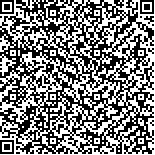龚剑秋,张芳,司马振奋,吴月峰.基于表面肌电分析的核心稳定性训练治疗腰椎间盘突出症的康复疗效分析[J].中华物理医学与康复杂志,2018,40(2):132-137
扫码阅读全文

|
| 基于表面肌电分析的核心稳定性训练治疗腰椎间盘突出症的康复疗效分析 |
| Long-term core stability training promotes recovery from lumbar disc herniation as evaluated by surface electromyography |
| |
| DOI: |
| 中文关键词: 腰椎间盘突出症 核心肌群 核心稳定性训练 表面肌电图 |
| 英文关键词: Lumbar disc herniation Core muscles Core stability training Surface electromyography |
| 基金项目:浙江省医药卫生一般研究计划A类(2015KYA221);绍兴市公益性技术应用研究计划(2015B70049) |
|
| 摘要点击次数: 6484 |
| 全文下载次数: 8497 |
| 中文摘要: |
| 目的 观察腰椎间盘突出症患者核心稳定性训练治疗前、后的疗效及核心肌群表面肌电信号的变化。 方法 选取符合入选标准的腰椎间盘突出症患者60例,按照随机数字表法分为观察组和对照组,每组30例。2组患者均接受常规物理治疗,观察组在此基础上增加核心稳定性训练,共治疗8周。所有患者均在治疗前、治疗后4周和8周分别进行数字疼痛分级法(NRS)、日本骨科协会(JOA)下背痛评定量表、Oswestry功能障碍指数(ODI)和表面肌电图(sEMG)的检测。 结果 治疗前,2组患者NRS、JOA、ODI功能评分,患侧腹直肌、腹外斜肌、竖脊肌、多裂肌和臀中肌的iEMG、RMG、MF值间比较,差异无统计学意义(P>0.05)。2组患者治疗4周及8周的NRS、JOA、ODI功能评分和患侧腹直肌、腹外斜肌、竖脊肌、多裂肌和臀中肌的iEMG、RMG、MF值均较组内治疗前改善(P<0.05)。观察组治疗8周时NRS、JOA、ODI功能评分和患侧腹直肌、腹外斜肌、竖脊肌、多裂肌和臀中肌的iEMG、RMG、MF值较组内治疗4周时改善(P<0.05),对照组治疗8周时NRS、JOA、ODI功能评分和患侧腹直肌、腹外斜肌、竖脊肌、多裂肌和臀中肌的iEMG、RMG、MF值与组内治疗4周时比较,差异无统计学意义(P>0.05)。观察组治疗4周时NRS、JOA、ODI功能评分和患侧腹直肌、腹外斜肌、竖脊肌、多裂肌和臀中肌的iEMG、RMG、MF值与对照组治疗4周时比较,差异无统计学意义(P>0.05)。观察组治疗8周时NRS[(1.35±1.27)分]、JOA[(25.90±3.65)分]、ODI[(6.95±8.27)%]功能评分和患侧腹直肌、腹外斜肌、竖脊肌、多裂肌和臀中肌的iEMG、RMG、MF值显著优于对照组治疗8周时,差异有统计学意义(P<0.05)。 结论 腰椎间盘突出症患者核心稳定性训练在短期内与常规物理治疗的改善效果相近,但延长训练时间可持续提高核心肌群的募集能力和耐疲劳性,同时改善腰痛症状及功能障碍,效果优于常规物理治疗。 |
| 英文摘要: |
| Objective To observe the effect of core stability training on lumbar disc herniation using changes in surface-electromyography signals from the core muscles. Methods Sixty patients with lumbar disc herniation were equally divided into an experimental group who were given the core stability training in addition to their regular physical therapy and a control group given the regular physical therapy only. The total course of treatment was 8 weeks. Each patient was assessed before the experiment and after 4 and 8 weeks of the intervention using the numeric rating scales of the Japanese Orthopaedic Association, the Oswestry disability index and integrated electromyogram (iEMG), root mean square (RMS) and medium frequency (MF) of the electromyographic signals from the rectus abdominis, obliqus externus abdominis, erector spinae, lumbar multifidus and gluteus medius muscles. Results No significant differences between the two groups were observed in any of the measurements before or after four weeks of the treatment. After 4 and 8 weeks of treatment, both groups had significant improvements in all of the measurements compared with before the experiment. Between 4 and 8 weeks the experimental group showed significant improvement in all of the measurements which was not matched in the control group. By the end of the treatment, all of the measurements of the experimental group were, on average, significantly better than those of the control group. Conclusions Both core stability training and regular physical therapy have similar effects on patients with lumbar disc herniation in the short term. However, continued core stability training improves the ability of core muscles and relieves pain and dysfunction better than prolonged regular physical therapy. |
|
查看全文
查看/发表评论 下载PDF阅读器 |
| 关闭 |